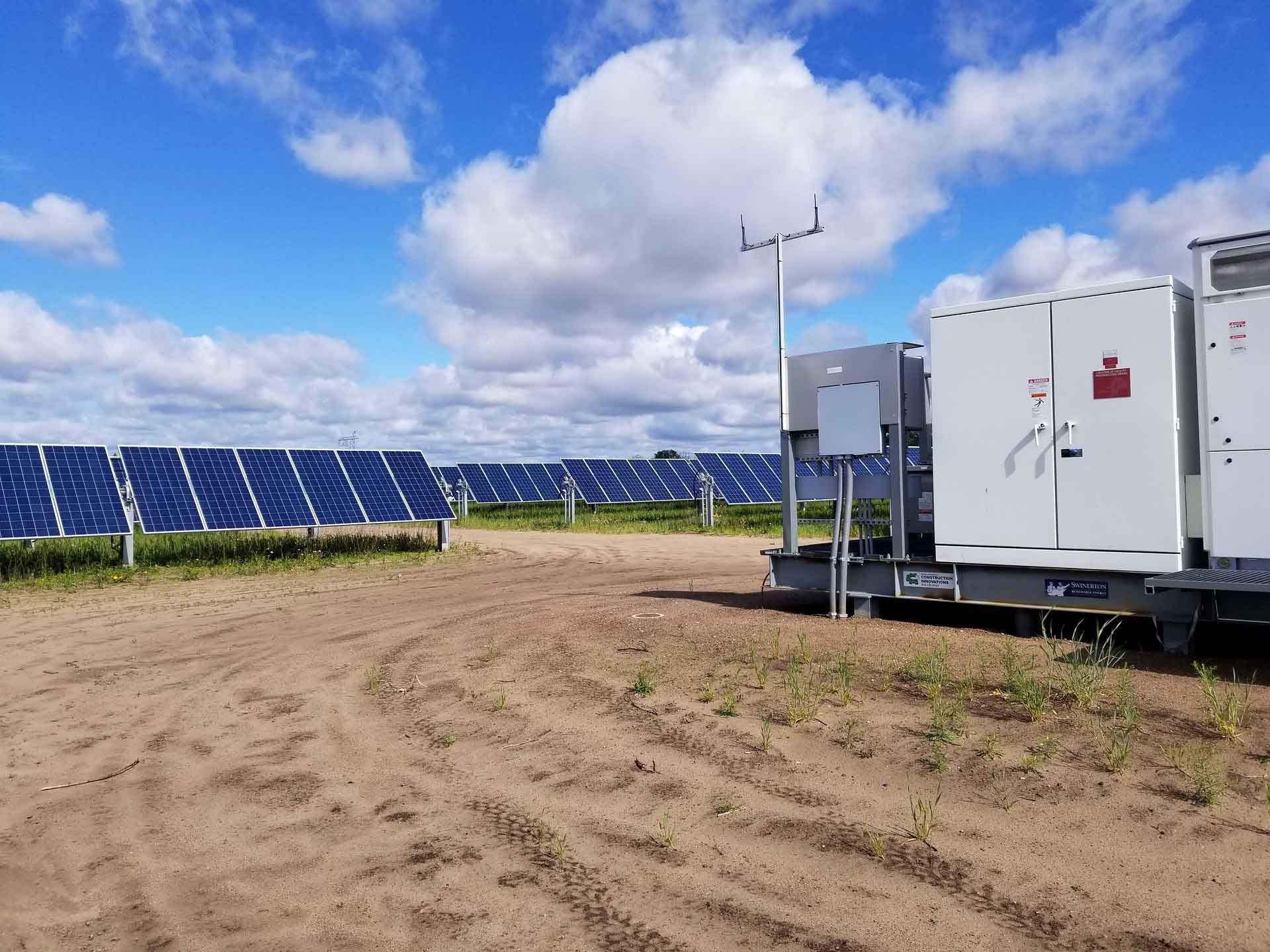Inverter stations play a pivotal role in the operation of solar panel systems by converting the direct current (DC) electricity generated by the solar panels into alternating current (AC) electricity, which is the form of electricity required for most household appliances and for distribution on the power grid. This conversion is crucial for the practical use of solar energy. Let’s delve into the detailed functions and importance of inverter stations in the context of solar panels:

Conversion of DC to AC
- Primary Function: The most fundamental role of an inverter station is the conversion of electricity from DC to AC. Solar panels produce electricity in DC because the sunlight’s interaction with the photovoltaic (PV) cells generates a flow of electrons in one direction. However, the AC power is necessary for household and commercial use due to its ability to travel long distances without significant loss of energy.
Maximizing Power Output
- Maximum Power Point Tracking (MPPT): Advanced inverters include MPPT technology, which continuously monitors and adjusts the electrical load of the solar panels to ensure they operate at their optimal efficiency level, especially under varying weather conditions. This feature maximizes the energy harvested from the solar panels throughout the day.
Grid Integration
- Synchronization with the Grid: For solar energy systems connected to the grid, the inverter ensures that the AC electricity it generates matches the grid’s voltage, frequency, and phase. This synchronization is essential for the safe and efficient transfer of electricity from the solar panels to the grid and ultimately to the consumer.
- Reactive Power Control: Inverters can also provide reactive power (VAR) control, which is important for voltage regulation on the electrical grid. This capability helps maintain grid stability, especially in areas with high penetration of solar energy.
Safety Features
- Anti-Islanding Protection: Inverters are designed with safety features such as anti-islanding protection, which detects power outages in the grid and automatically disconnects the solar energy system. This feature prevents the system from continuing to feed power into a de-energized grid, ensuring the safety of utility workers performing repairs.
Monitoring and Maintenance
- Remote Monitoring: Many modern inverter stations are equipped with remote monitoring capabilities, allowing system owners and operators to track the performance of their solar panels and the efficiency of the energy conversion process. This feature facilitates the early detection of issues and simplifies maintenance and troubleshooting.
Integration with Storage Systems
- Battery Storage: Inverter stations can be integral to systems that include battery storage, managing the flow of electricity to and from the batteries. This allows excess energy generated during peak sunlight hours to be stored and used later, enhancing the flexibility and reliability of solar power systems.
Conclusion
Inverter stations are indispensable components of solar panel systems, enabling the conversion of solar energy into a form that is usable for household, commercial, and grid distribution. Their advanced functionalities extend beyond mere conversion, encompassing efficiency optimization, grid integration, safety, and system monitoring. As solar technology continues to evolve, the role of inverter stations is becoming increasingly sophisticated, further enhancing the efficiency and integration of solar energy into our daily lives and the broader energy ecosystem.
